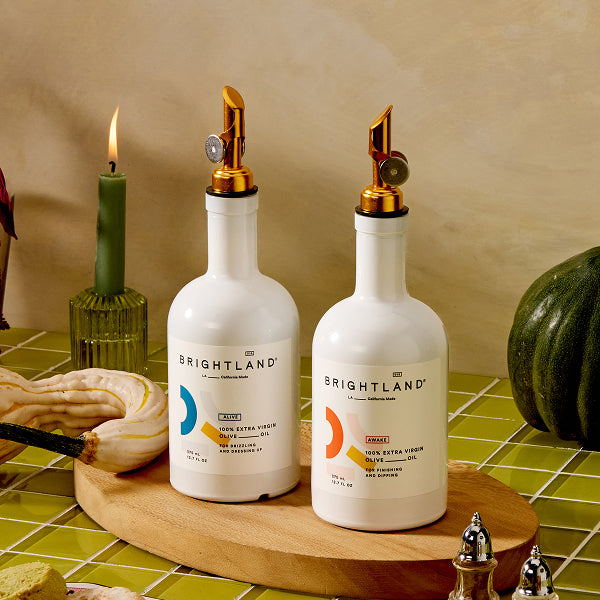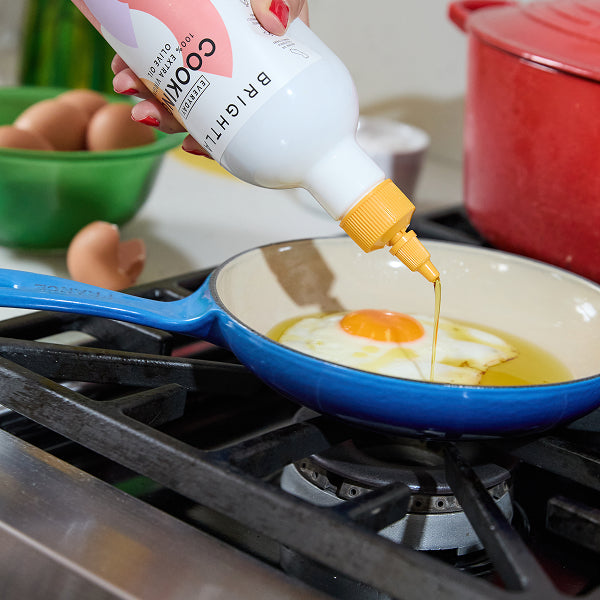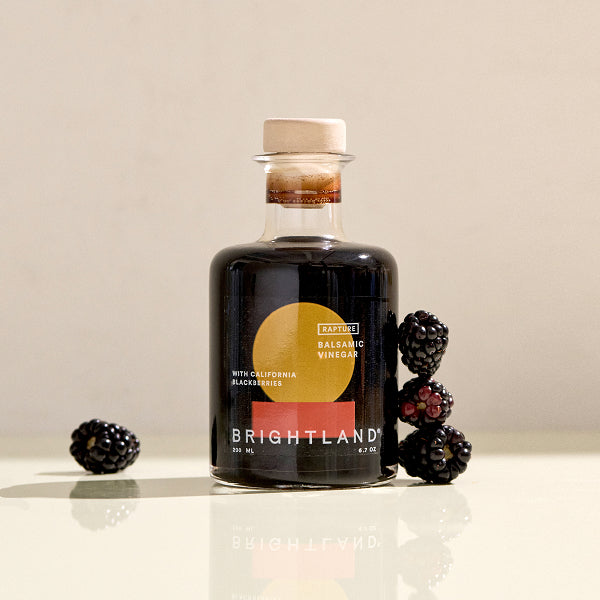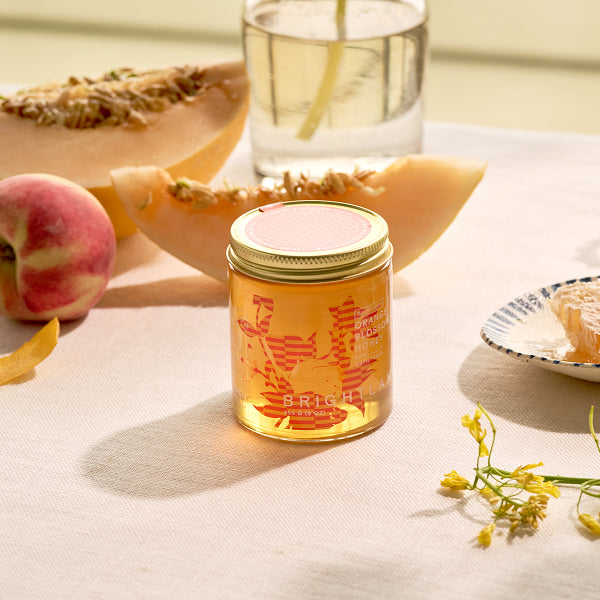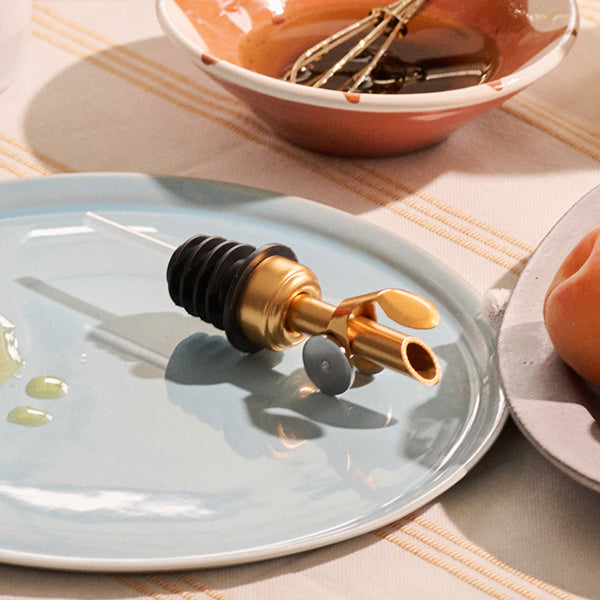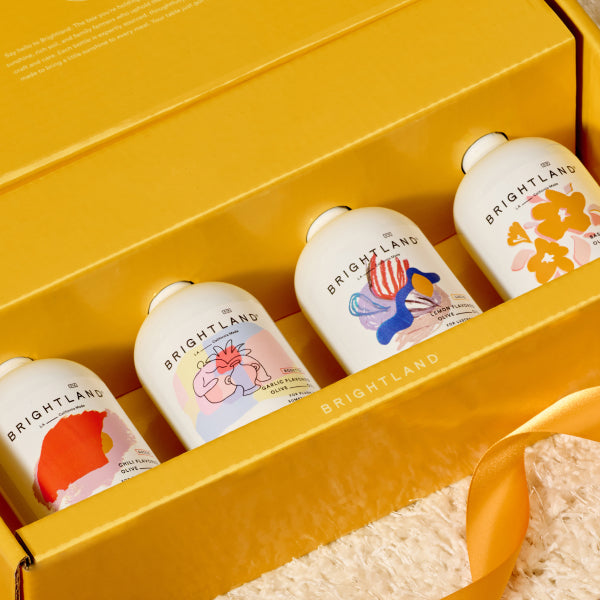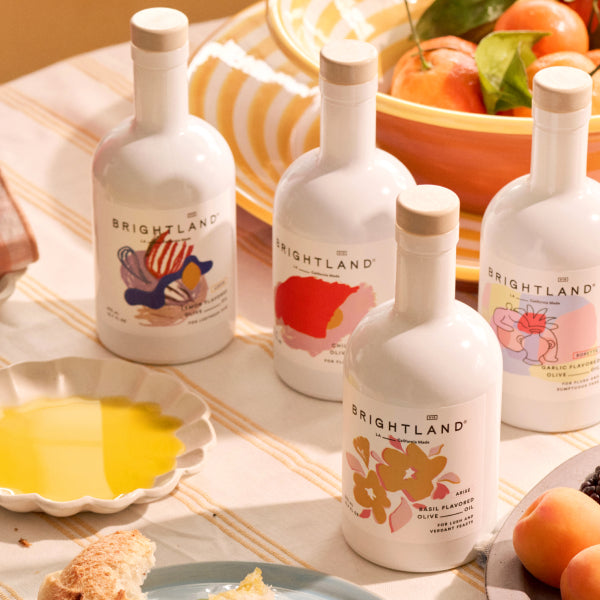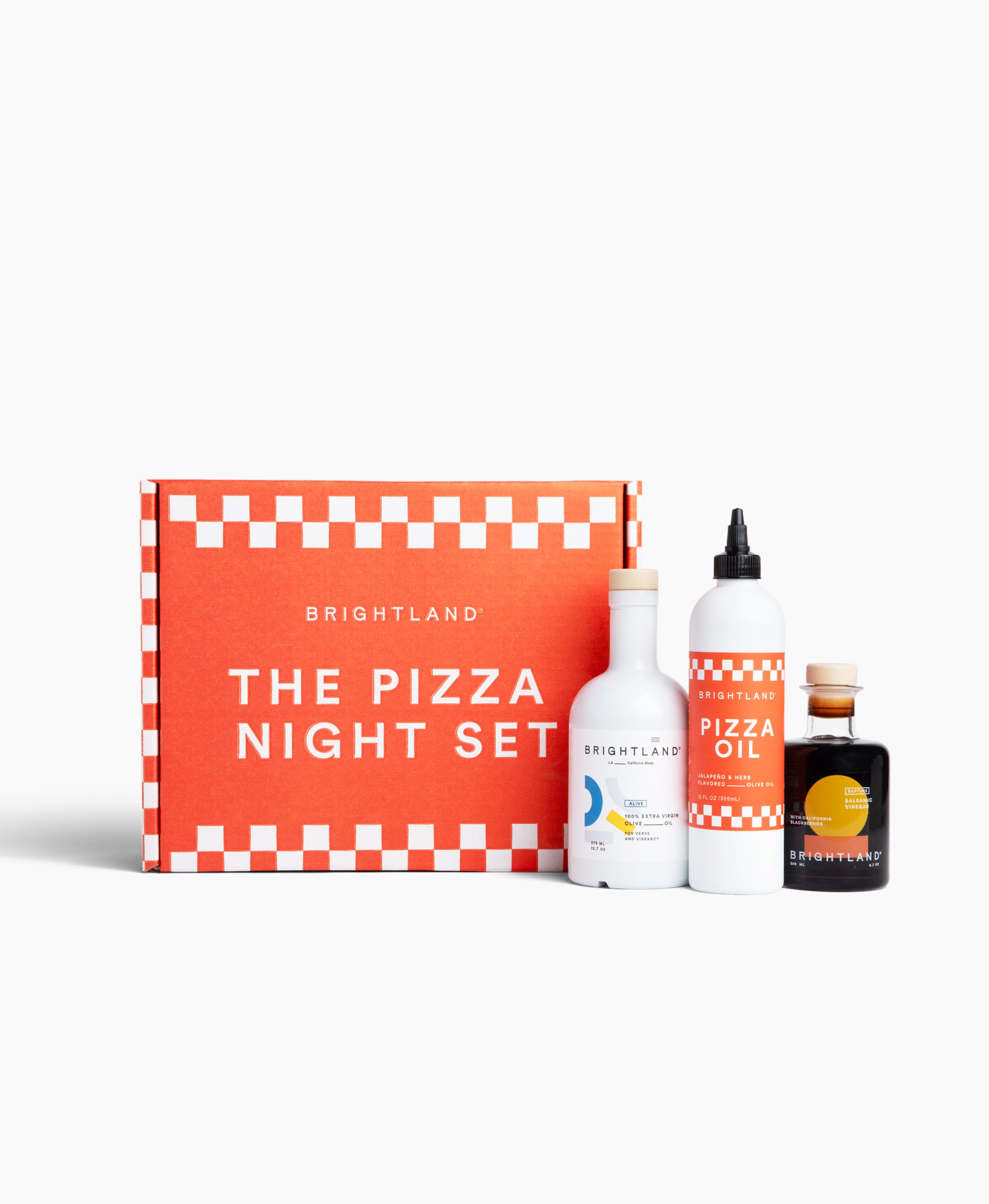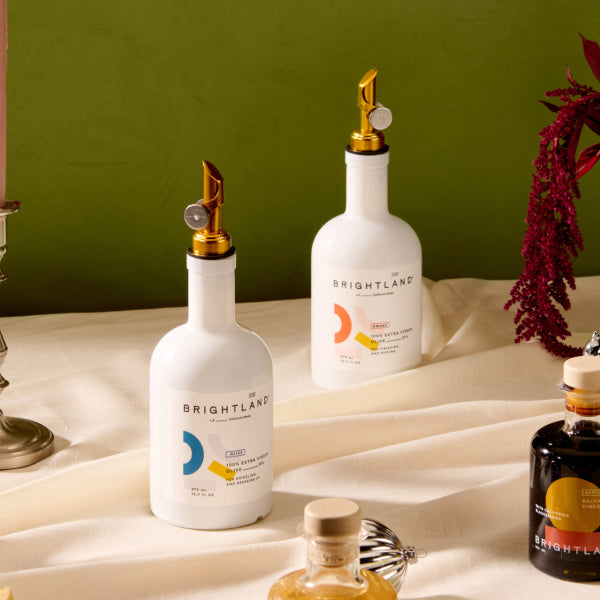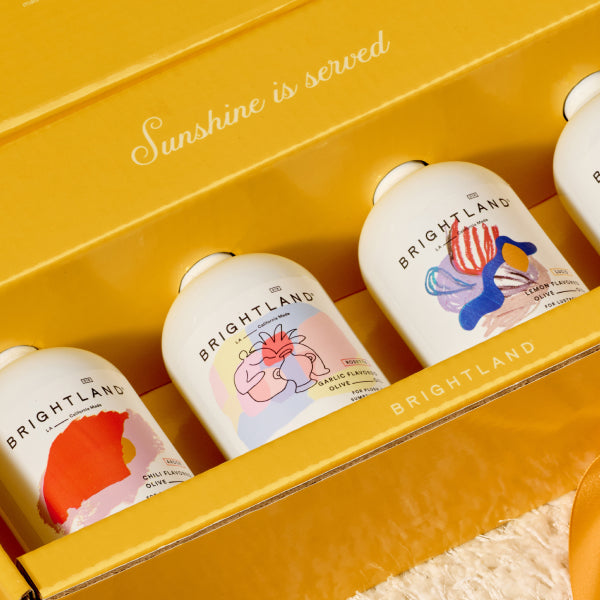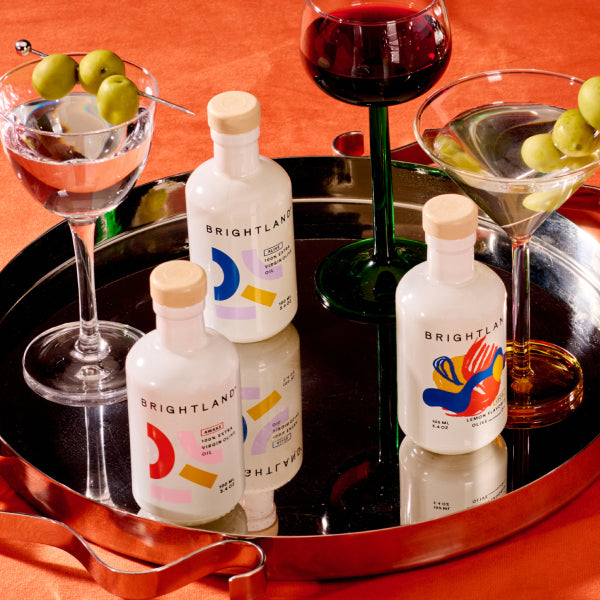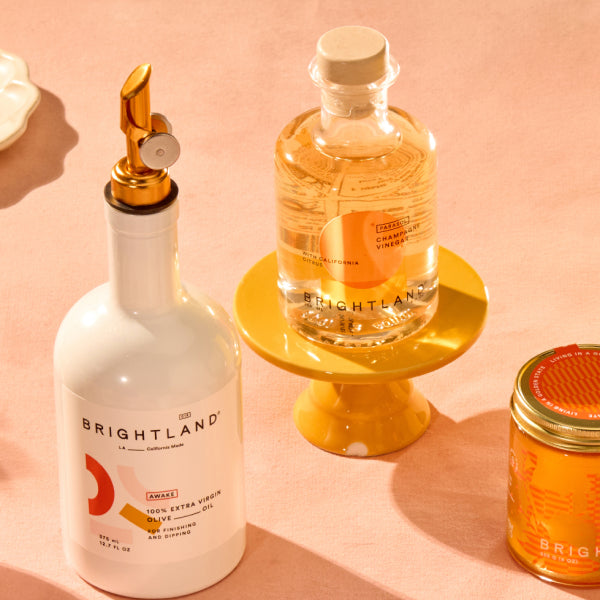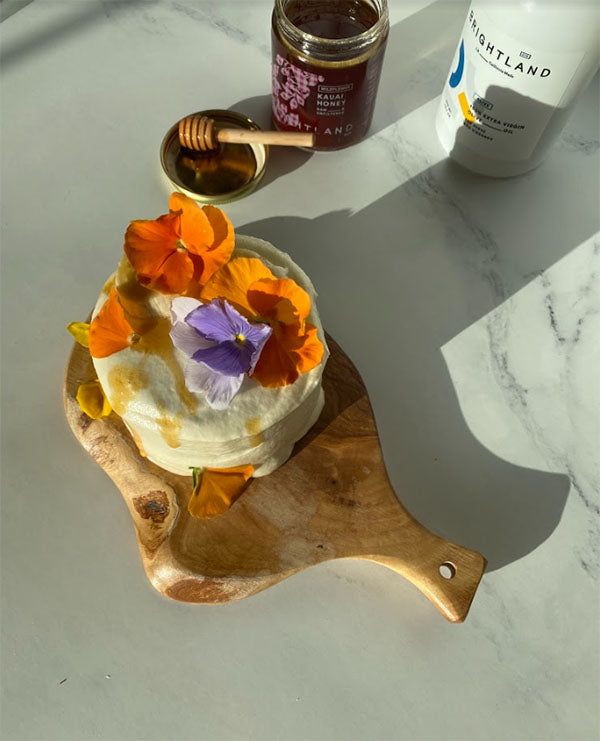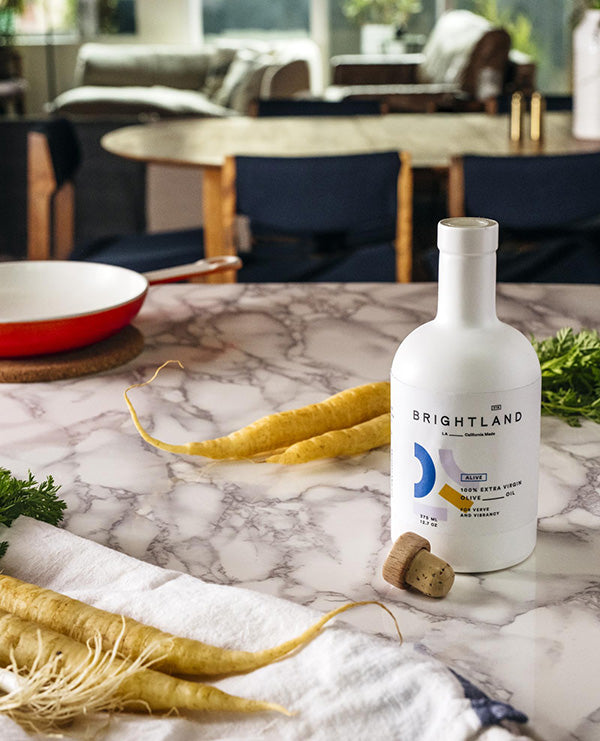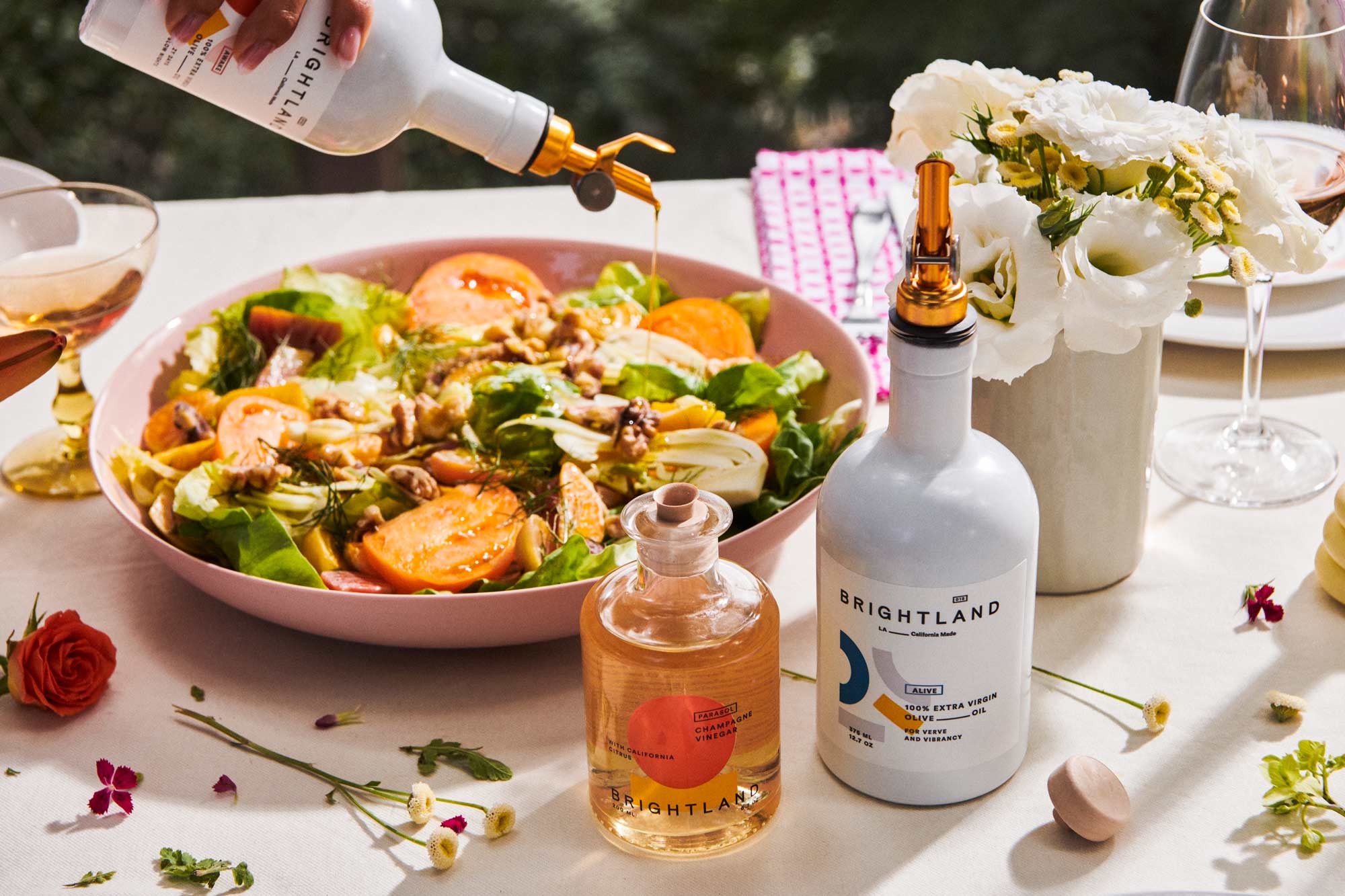[open type="rte"]

[close type="rte"][open type="rte"]
While most people just reach for sugar without a second thought, the delicious taste and nutritional health benefits of raw honey make it well worth it to switch to this sweetener for baking. However, you will need to make some small changes to your baking if you plan to substitute honey for sugar in order to ensure your baked goods turn out perfectly. In this ultimate guide, we will explore the benefits of baking with honey, explain how to substitute honey for sugar in baking recipes and offer our top tips for choosing and measuring a honey for baking.
[close type="rte"][open type="rte"]
Benefits of Baking with Honey
Not sure if baking with honey more often is worth it? Sugar is such a baking standby that it can be hard to convince ourselves to switch things up. Here are four reasons why we love baking with honey instead of sugar and other sweeteners:
Honey offers more health benefits than sugar.
Both honey and sugar have high amounts of fructose and glucose, the two main types of sugar molecules. However, sugar does not really contain any other ingredients, while honey contains plenty of other beneficial compounds, including enzymes, amino acids, B vitamins, vitamin C, minerals and antioxidants. These beneficial compounds offer lots of nutritional advantages and, in particular, they have great antimicrobial and anti-inflammatory results. Baking with honey instead of baking with sugar can help to add a little bit of benefit to your baked goods. (Learn more about “Is honey good for you?” in our guide.)
[close type="rte"][open type="rte"]

[close type="rte"][open type="rte"]
Honey is sweeter than sugar.
Ounce for ounce, honey is sweeter than sugar, meaning that you can use less of it in order to achieve the same effect in your baked goods. Keep in mind that honey is higher in calories than sugar, but since you can use less of it, it often balances out. Because honey contains other compounds in addition to fructose and glucose, it also takes your body longer to break down, so it does not cause blood pressure spikes as dramatically as pure sugar does, even though honey tastes sweeter.
Honey comes in many more flavors than sugar.
There are not that many kinds of sugar, and the taste differences are pretty negligible. However, honey comes in a plethora of unique flavors that can be used to make your baked goods taste even more delicious. This is because the honey takes on the taste of the different flower nectar(s) that the bees collect to make it. For instance, the two honeys in our raw honey set — California Orange Blossom Honey and Kauai Wildflower Honey — taste different because they come from different flowers in different regions. While our Kauai Wildflower Honey pairs incredibly with cinnamon and apples for an apple pie, our Orange Blossom Honey would be lovely in a citrus loaf or cake. By branching out into different honey flavors, you can really get creative and experiment with different tasting baked goods.
Honey results in a moister, fluffier texture.
Sugar is a dry, loose granule, and it imparts that texture to baked goods. Cookies and cakes made with sugar tend to be more dry and to crumble more easily. Meanwhile, goods made with honey are deliciously moist and have a tighter crumb that does not disintegrate as easily. While you sometimes want the drier, crisper texture of sugar — such as when baking gingersnaps — many cakes, cupcakes and other baked goods benefit from the texture of honey.
[close type="rte"][open type="rte"]
[close type="rte"][open type="rte"]
Substituting Honey for Sugar
Baking with honey is not the same as baking with sugar. Honey behaves differently than sugar, so the end result will be a little bit different as well. Baked goods made with honey tend to be more moist and chewy with a tight crumb, as opposed to the crisp and crumbly texture that comes from sugar. Some of the other main differences between sugar and honey are:
[close type="rte"][open type="rte"]

[close type="rte"][open type="rte"]
- Honey is more liquid than sugar, changing the consistency of your baked goods.
- Honey is more acidic than sugar and will change the flavor of your baked goods.
- Honey browns more quickly than sugar, which can result in overbaked goods.
You can learn more about honey vs. sugar in our dedicated guide, where we dive into different situations beyond just baking.
If you are substituting honey for sugar, you can use a 1-to-1 ratio if you would like. If the recipe calls for 1 cup of sugar, then you can use 1 cup of honey. Keep in mind that honey is sweeter than sugar, however, so this will increase the sweetness of the final bake. If you would like, you can reduce the amount of honey by 25 percent. If the recipe calls for 1 cup of sugar, then you would use 3/4 cup of honey instead. This is totally up to you. It just depends on whether or not you want a sweeter or a less sweet baked good.
Honey is about 25 percent more liquid than sugar, so that can make your batter too runny if you are adding honey in large quantities. If you are using less than 1 cup of honey, then you probably do not need to make any other changes to the recipe. However, if you are using more than 1 cup of honey, you should reduce the volume of the other wet ingredients by ¼ cup for every 1 cup of honey that you use to make things even out. If the recipe does not include any other liquids, then add 2 tablespoons of flour to every 1 cup of honey to help soak up some of that extra moisture.
[close type="rte"][open type="rte"]

[close type="rte"][open type="rte"]
Honey is more acidic than sugar, which can affect the taste as well as the rise of your baked goods. (If you want to get technical, sugar has a pH of around 7, while honey’s pH can vary from 3.4 to 6.1, making it acidic.) To help compensate for this acidity, you need to add ½ teaspoon of baking soda for every 1 cup of honey that you use. This will make everything balance out and get the taste and texture you are looking for.
Finally, you should adjust your oven temperature to prevent overbaking your recipe. This varies slightly depending on your oven, but reducing the cooking temperature by 25 degrees Fahrenheit is a great starting place. It may take some trial and error to figure out the exact temperature change you need to make for your unique oven. It is also a good idea to keep an eye on the dish as it bakes so you can put some foil on the top if it is getting too brown.
Keep in mind that you probably do not need to make these changes if the recipe already calls for honey. Whoever created the recipes should already have made these changes to account for the presence of honey.
[close type="rte"][open type="rte"]
[close type="rte"][open type="rte"]
Choosing a Honey for Baking
When choosing a honey for any application, including baking, we recommend selecting a raw honey that has not been pasteurized or otherwise processed. That is because these heat and chemical processes remove the pollen particles from the honey, which are responsible for much of the flavor as well as the nutritional benefits that make honey such a unique sweetener. Raw honey may not be as clear and transparent as these uber-filtered honeys, but it is much better for your taste buds and your health.
[close type="rte"][open type="rte"]

[close type="rte"][open type="rte"]
Carefully read the label to ensure that the honey has not been cut with corn syrup or other ingredients to dilute the product and lower the price. Sadly, this is a common tactic with cheaper honeys from big manufacturers, and that “honey” that you are buying might not actually be honey at all. Personally, we think that it is always a better idea to pay a little bit more money to ensure that you are actually getting real honey instead of a knockoff sweetener.
When it comes to baking, you also need to choose a honey flavor that will complement the rest of the ingredients in your baked goods. A more floral honey will impart an entirely different flavor than a more fruity one, so think about how you want your baked goods to taste and let that guide your decision making.
[close type="rte"][open type="rte"]
How to Measure Honey for Baking
When cooking, measurements are often more of a suggestion than a guideline. However, when it comes to baking, precise measurements are vital for creating a baked good that has the proper taste and texture you are expecting. Too much or too little of a certain ingredient, and your final bake could be way off. Think of your baking recipes as a chemical experiment, where everything needs to be as exact as possible in order to get the reaction that you want.
[close type="rte"][open type="rte"]

[close type="rte"][open type="rte"]
Most beginning bakers measure their ingredients, including honey, by volume using cups. While this is fine for getting started, you will get far more accurate measurements, and thus create better bakes, by using a kitchen scale and measuring by weight rather than volume. Choose a container for your honey, place it on the scale and then zero it out. Then, slowly add the honey until it gets to the exact weight that you want and add it to your mixing bowl.
Honey can be sticky and have a thicker texture, which can sometimes make it tough to transfer it from your measuring cup into the mixing bowl. To speed up this process, you can soften the honey by placing the honey jar in a hot water bath to heat up the honey and make it flow more easily. You can also coat the measuring bowl with a little bit of olive oil to help the honey stick less. Or, if the recipe calls for oil, measure that first in the same bowl so that the residual oil will provide a barrier against the honey.
[close type="rte"][open type="rte"]

[close type="rte"][open type="rte"]
We hope this guide gave you the information and confidence that you need to start baking with honey! If you are ready to experience the world of raw honey, check out our duo The Couplet, which will introduce you to two tasty yet distinct raw honey varieties. These honeys are perfect for mixing into batter, stirring into tea or coffee and everything in between.
Image Credits
PCH.Vector/Shutterstock.com
MoreVector/Shutterstock.com
RUM-photo/Shutterstock.com
[close type="rte"]

